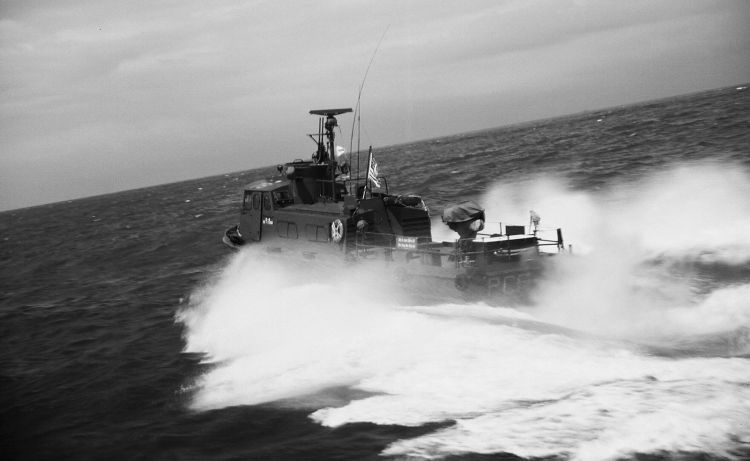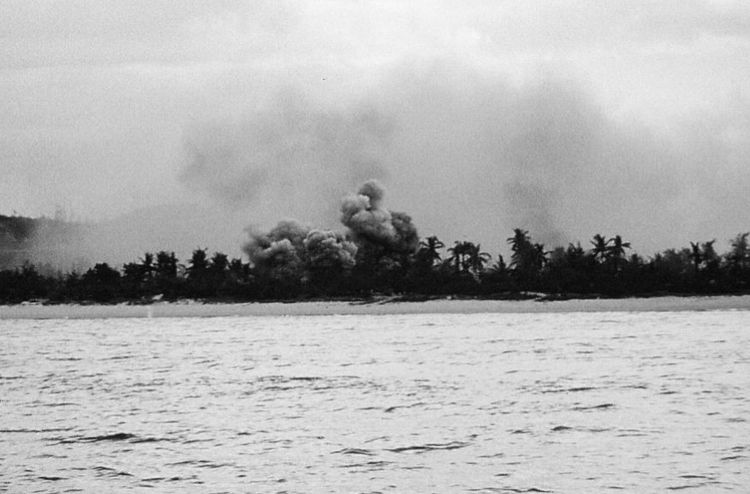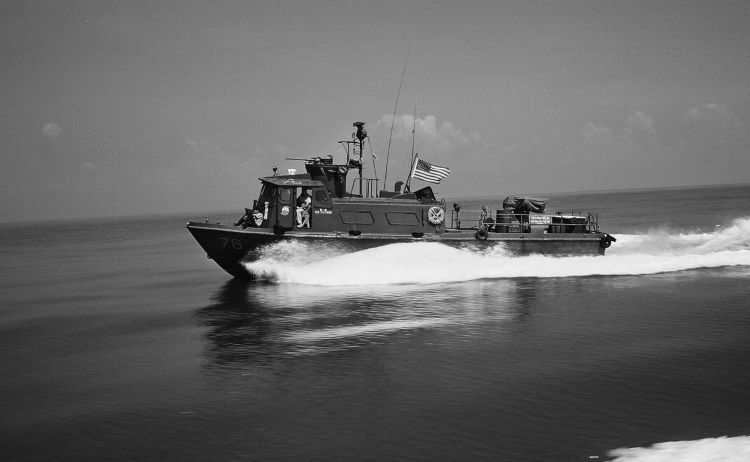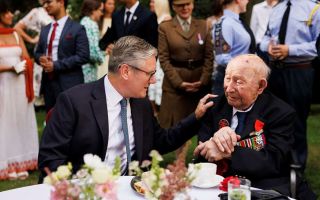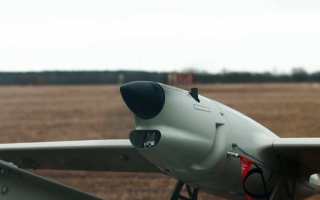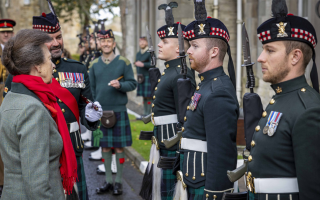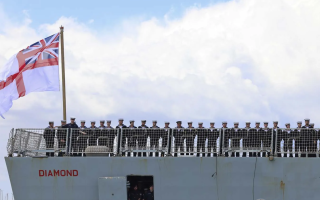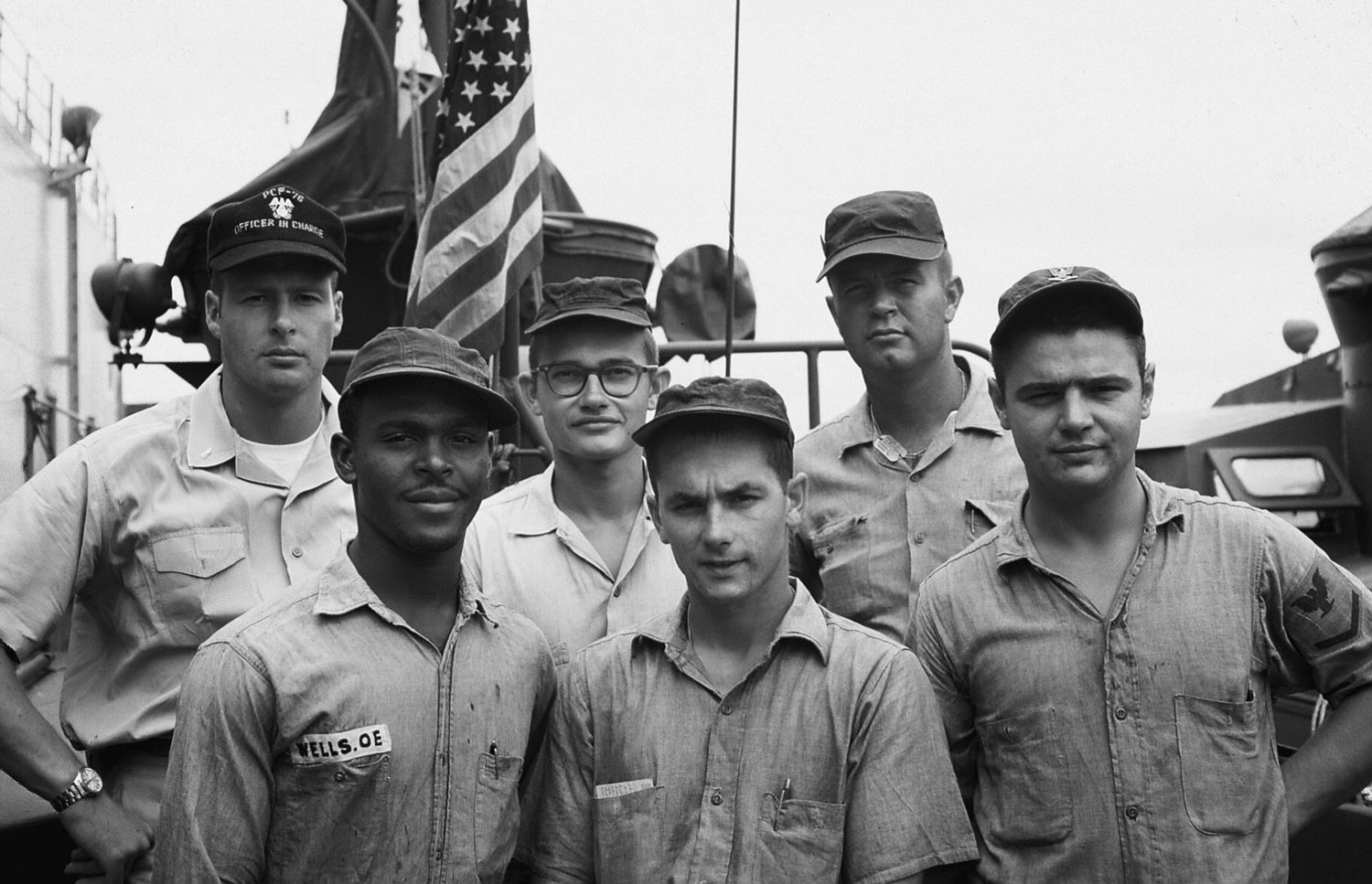
Swift Boats, Sailors, Submarines, White Water And Red Hot Lead

Article by Dan Daly - Author, Vietnam veteran, Swift Boat commander
My boat PCF 76 arrived in the Charlie patrol area about 8 miles north of Da Nang. Before getting underway, we had checked in with Article, our onshore control, for an update on enemy activity in the area. There was none. ]
At 2000 hours, I turned the watch over to Boats, our leading enlisted man, and climbed up to the top rack for a peaceful four hours. I would assume the next watch at 2400.
At 2300, I was rudely awakened by Boats repeating “Skipper, You’re not going to believe this.” He quickly described a small, but suspicious contact that had painted on our radar just two miles away. Slowly, he closed in on it. At approximately 75 yards, he illuminated it with our searchlight and saw what he thought was a submarine periscope.
Despite my trust in Boats, I wanted confirmation. I soon got it with another image on the radar scope. This time, we closed the contact at full speed, only to have it disappear without a trace.
Now fully awake, I radioed Article in Da Nang, inquiring, “Was there any friendly maritime activity in the Charlie area including a possible submarine?” Their response was a somewhat incredulous, “negative, nothing at all.” “Roger out”, was my succinct response avoiding further conversation.
As I reached up and replaced the radio microphone, out of the corner of my eye, I saw blue tracer rounds streaking along the tree line about 100 yards off our starboard beam.
Now, things were not looking good, and my blood pressure was rising. I knew the sector radio frequency for the Marines and called, “Tiger 5” the only call sign I had. They immediately responded, informing me, that there was a North Vietnamese company operating in the area and they expected to engage them later that evening.
My friend Ed Bergin, the Skipper of PCF 79, several months earlier, had captured a heavily armed Chinese communist trawler further south delivering weapons. Ed’s story was forefront in my mind. I concluded that delivering weapons or troops by a submarine was an even better scenario, especially with the enemy waiting nearby on shore.
I yelled, “General Quarters”, to the crew. Every weapon was manned and loaded in under one minute. Hours of training drills were certainly paying off.
Boats was back on the helm, watching the radar scope. Much to my dismay, he pointed out two small contacts in the surf line about 200 yards astern of us. Conclusion, these were small boats or rubber rafts from the submarine heading to the beach.
Dark of night with no moon or stars was known to be the ideal operating scenario for the enemy. With no wind and glass flat seas, our approach was hardly in a stealth mode. Our big diesels, even at low speed, were rumbling their melodious roll.
Regretfully, this meant two things, neither good. The enemy, nearby on the beach, would know where we were. At the same time, any troops in a rubber raft would hear us coming.
Covering both potential targets with our 50 caliber machine guns, the twin mount ahead and the stern mount to starboard, we approached with everyone locked and loaded.
I chose to drive at the after steering station where I had better all-around visibility. The crew would maintain firing discipline. They were not going to open fire until we determined what was going on, or we were fired upon.
Looking first ahead, then quickly off to our starboard side, I scanned for any muzzle flashes. There were none! At idle speed, we approached the two targets riding low in the water. They could only be rubber rafts. At 50 yards, I put the engines in neutral, beginning a verbal and physical standoff.
Nothing was happening. The calm wind carried not a sound in the darkness. The ink black night revealed no movement on shore or in the rafts ahead. I made a decision to end the stalemate.
I called out in English. I had few options, and ordered one raft only, to slowly approach the side of PCF 76. At any moment, either side could commence a deadly, close-in firefight.
Relieved, we heard only the splash of their paddles stroking the water as they closed the gap between us. In the darkness, we could see little movement on board. When they came alongside, there appeared to be five or six people on board all dressed in black including face paint.
They would be heavily armed with weapons at the ready. Suddenly, it struck me that with the raft alongside our large 50 caliber machine guns would be useless. They could not be depressed low enough to hit the target below.
Regardless, we had to move forward. I called for one person only to slowly climb on board our Swift Boat. My order was followed and after a few grunts an individual introduced himself as Lieutenant Junior Grade Robert Harrington, a United States Navy frog man.
All around, there was an audible sigh of relief.
Not totally convinced of his authenticity, I felt I needed some additional verification. At the time personal IDs were not an option, so I asked him.
“Who has the most famous name on frog man (UDT) Team Five?” He struggled for a moment until I bluntly asked the question again. This time his staggered response was correct. It was Teddy Roosevelt the Fourth, a college classmate of mine.
As anticipated, he informed me that we had just compromised a top-secret mission. I responded that, in fact, he was trespassing and this was my area of operational responsibility.
Rather than continue the debate, as brothers in arms, we simply shook hands. They returned to the rafts, and we slowly turned north resuming our patrol.
I was not naïve enough to think this little vignette was over. Nor was I surprised when at 0200, I received a radio call from Beauty Sleep, “Encrypted message to follow.” I knew it must be the submarine. The message was not going to be, “Drop by for a mug of coffee or an early morning breakfast conference.”
Boats carefully copied the message by hand, and attempted to decrypt. It did not decrypt. I asked Beauty Sleep to send it again and they did with similar results. Then, I suggested that perhaps they were using the code for Monday when it was actually Tuesday. While correct, the tone on the radio told me, my commentary was not well received.
They requested a rendezvous at 0300, in their case on the surface. I arrived on schedule, verified my location multiple times with radar fixes. Beauty Sleep was nowhere to be seen. The rendezvous finally took place after multiple radio transmissions, “Where are you?”
These ended when the submarine finally turned on its powerful anti-collision yellow strobe light. They were, in fact, 2 miles from the rendezvous location because their radar was not functioning correctly.
Events continued their downhill spiral as Boats came alongside the rounded and tubular hull of the submarine a trifle fast with a crescendo of aluminum meeting steel. No doubt, our arrival was clearly announced on board Beauty Sleep.
I was escorted down a vertical ladder to meet with the Navy Commodore, who was in charge of the mission. Outside the small officers’ wardroom was a contingent of frogs from our earlier meeting. The Commodore was less than happy to see me and certainly not complementary regarding Swift Boat competency.
Although I did not report to him, he was senior to me and deserved my respect. That was the case until he made some mention of Swift Boats being a disgrace to the United States Navy.
The following was pretty much verbatim, “Commodore, with all due respect, I checked with my operational control, Article, and was informed that there were no friendly naval units operating in the area. Furthermore, the Marines informed me that there was an enemy North Vietnamese company operating in the area.”
On a roll, I continued, “With all due respect Commodore, you’re pissed at me because I found your submarine. Sir, unless otherwise directed, (UNODIR ,a great naval phrase) I intend to return to my boat and resume patrol.”
We did that eyeball to eyeball thing for a few seconds and nothing more was said. I turned to depart. No salute was required because I was inside and uncovered at the time. Passing by my new frog men friends, I could see they were somewhat horrified by the conversation.
Reaching the deck of the submarine, I gave Boats the twirling finger “Wind’em up” signal and jumped aboard. Fortunately, the leap was within the boundaries of my athletic competence and I landed smartly on the aft deck.
The next day, I heard that despite an onshore meeting, there were no repercussions and the Beauty Sleep incident was declared null and void. Swift Rules!
Dan Daly, is a Vietnam combat veteran who was the Officer in Charge of Swift Boat PCF 76 during a 12 month tour of duty in South Vietnam. His book 'White Water, Red Hot Lead' is published by Casemate and can be bought here.
